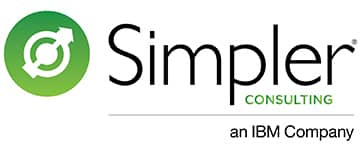
Don’t let Overall Equipment Effectiveness subvert your lean transformation
Overall Equipment Effectiveness (O.E.E.) has long been used in manufacturing as an indicator of process performance. Most often, it is used as a metric for a single capital asset’s utilization or “efficiency.” However, the improper pursuit of O.E.E. improvements can drive behaviors contrary to true lean operating system principles.
O.E.E. is calculated by a straight-forward formula that compounds the availability, process performance, and quality yield into a single percentage. As a formula:

Let’s consider a simplistic example of a process center delivering the following performance:
- The asset is producing for 18 hours vs. a planned 24 hours per day = 18 / 24 = 75% availability
- The machine produces an output 500 total units, each having an ideal cycle time of 2 minutes, over the 18 hours (1080 minutes) of actual run time = (500×2)/ 1080 = 92.6% performance
- However, only 450 of the 500 units produced meet quality expectations = 450 / 500 = 90% Quality
The resulting O.E.E. for this asset is calculated to be 75% x 92.6% x 90% = 62.5% O.E.E.
A 63 % O.E.E. implies that 37% of the asset’s maximum potential production is lost and, by traditional thinking, needs to be recovered to improve machine efficiency. Typically, root cause analysis and corrective/preventive actions are pursued to increase output and close the gap toward the maximum theoretical output. This logic may be appropriate for an asset that is the constraint in the entire value stream, but is often not consistent with a true flow-base, lean operating system.
“Lean thinking” (and acting!) is often counter-intuitive in comparison to traditional mass-production paradigms. One of the fallacies in traditional O.E.E. application is the relentless desire to increase output to the maximum possible without consideration of end-customer demand or next downstream process’ need. This practice is diametrically opposed to the key tenet of lean operating systems–that delivery of value must be at the pace of customer demand (a.k.a. takt time).
In the above example, 18 hours/day run time is preferred, if that is what is needed to satisfy actual customer demand. Striving to operate an asset beyond the minimal time needed propagates waste and consumes resources (people, energy, raw materials, etc.). Excess production is pushed into the system where it requires handling and storage and may eventually become damaged or obsolete as the inventory was not needed. All these negative outcomes result from the lack of lean thinking via the relentless pursuit of O.E.E. or “asset efficiency.”
Instead of overproducing in pursuit of traditional O.E.E., lean thinking uses a more customer-oriented measure of takt time attainment as an indicator of product flow reliability. Takt time attainment is a simple comparison of the number of time periods (typically hours) during which the asset produces the quantity of defect free units required by the downstream customer. For example, if during 2 hours of an 8-hour shift the machine was not able to provide the number of requested units, the takt time attainment would be calculated as:
6 hours each meeting full customer demand during 8 total hours of production = 6/8 = 75 % takt time attainment.
100% takt time attainment is the goal for a lean-based production system. Solving the gap between the actual performance and 100%, or 25% in this example, becomes the area of focus – not how to achieve more output. Problem-solving efforts need to be focused on improving takt time attainment by:
- Increasing yield by eliminating product defects and quality rejects
- Increasing uptime by resolving unplanned downtime and stoppages due to breakdowns or changeovers
- Increasing the run rate to the machine’s specified rating
- Other “flow stoppers” that drive misses in hourly takt time attainment
Safely producing defect-free products at the pace of actual customer demand is one of the bedrock fundamentals of a lean operating system. 100% reliable flow of production at takt time is not easy to achieve, so don’t let a mass-production based metric such as O.E.E. take your lean journey off-course.

Jim Little
Partner, Industrial Sector
Simpler Consulting, an IBM Company
+1-512-568-6602
Jlittle5@us.ibm.com



